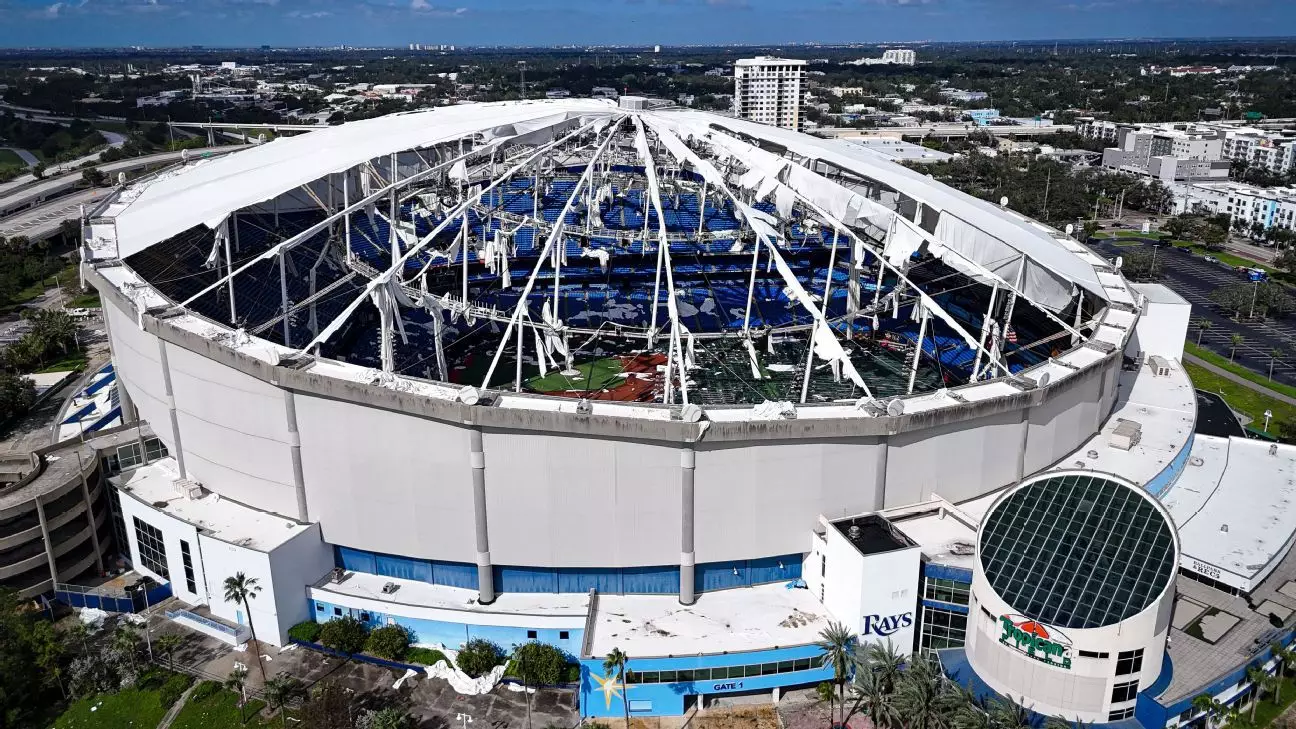In a decisive move reflecting their commitment to remain in St. Petersburg, the Tampa Bay Rays are now backing a significant $55.7 million plan to repair Tropicana Field, which suffered extensive damage from Hurricane Milton. Set to take place ahead of the 2026 Major League Baseball season, this repair initiative aims to restore the aging ballpark, which has faced numerous challenges in recent years. Rays co-president Matt Silverman communicated the team’s support in a direct email to city officials, underscoring the importance of timely repairs under existing agreements.
Hurricane Milton, which battered the region in October, left Tropicana Field with a shredded fabric roof, opening its interior to water damage and other vulnerabilities. Under their current contract, the city is responsible for covering repair costs, raising diverse opinions among city council members, particularly as the community grapples with the aftermath of previous storms. The Rays, having demonstrated a willingness to consider alternative solutions, are now aligning with the city’s obligation to restore the facility according to the terms initially established.
Silverman emphasized the urgency of commencing reconstruction efforts—time is of the essence. Even a partial return to Tropicana Field for the 2026 season poses considerable logistical hurdles and revenue challenges for the franchise. In his correspondence, he stated, “It is therefore critical that the rebuild start in earnest as soon as possible,” highlighting the complexities in balancing timelines and expectations. The stakes are high as the Rays navigate a challenging landscape while maintaining ties to their home city.
While the Tampa Bay organization anticipates a smooth rebuilding process, the St. Petersburg city council has expressed skepticism concerning the funding. Community leaders are hesitant about the financial commitment, especially with residents still absorbing the impacts of Hurricane Helene. Mayor Ken Welch assured the public that insurance claims and Federal Emergency Management Agency (FEMA) funding would alleviate the burden on local taxpayers.
The Rays have indicated that upon successful repair of Tropicana Field, they will be obligated to play there for three additional seasons, as per the established agreement. However, the overarching goal remains focused on a long-term vision for the franchise, which includes a new $1.3 billion ballpark with an expected opening in the coming years. The future stadium is part of a broader $6.5 billion developmental initiative, the Historic Gas Plant District. This ambitious endeavor promises to revitalize a neighborhood long-defined as a vibrant Black community before urban displacement altered its landscape.
Residents and stakeholders are hopeful that this new development will attract diverse opportunities—encompassing affordable housing, retail spaces, a Black history museum, and various dining options. The blending of baseball culture with meaningful community investment portrays a vision of a more inclusive urban environment, reinforcing the Rays’ commitment not just to sports, but to the revitalization of the areas surrounding their home base.
Looking Ahead: Positive Developments for the Rays
As the Rays prepare to usher in the 2025 season at Steinbrenner Field, the anticipation for a “grand reopening” at Tropicana Field continues to grow. The team’s current engagement with Major League Baseball for enhanced oversight of repair work aligns with their commitment to transparency and efficacy, fostering confidence among fans and stakeholders. The planned reconstruction of Tropicana Field and the larger benefits of the Historic Gas Plant District project together symbolize a crucial turning point for the franchise and the city of St. Petersburg.
While the road ahead features financial pressures and current infrastructure challenges, the Tampa Bay Rays’ unified stance on repairing Tropicana Field lays the groundwork for a hopeful future—not only for the team itself but also for the community that has long supported it. The intersection of sport, culture, and urban development may indeed chart a course for transformation, underscoring how teamwork and dedication can overcome even the most severe adversities.


Leave a Reply